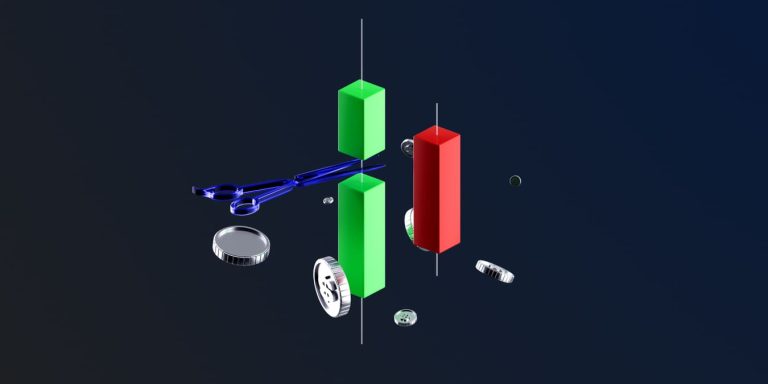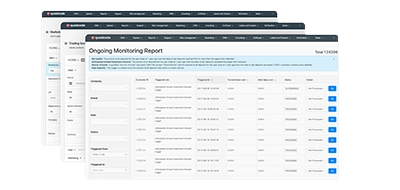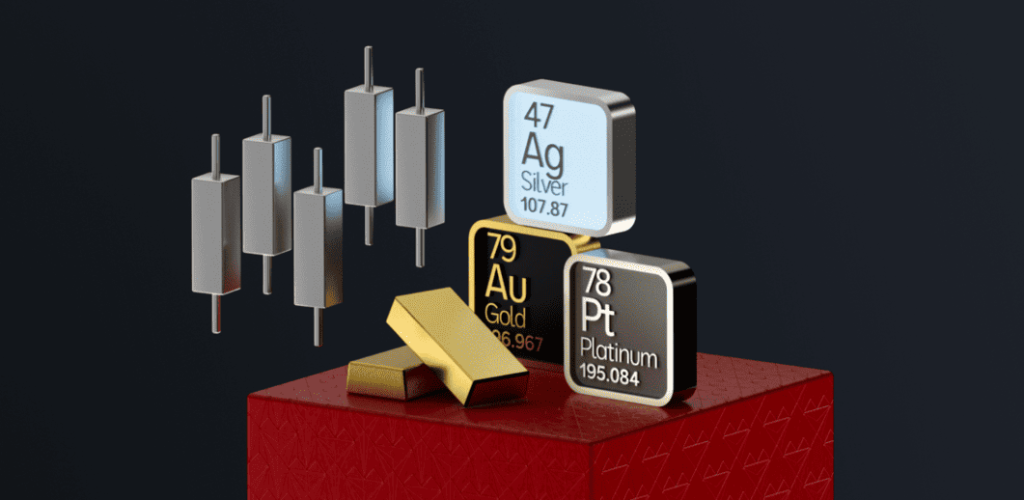Quay lại
Contents
Nến Hammer: Nến Hammer là gì và cách sử dụng


Vitaly Makarenko
Chief Commercial Officer

Demetris Makrides
Senior Business Development Manager
Nến búa là gì?
Nếu bạn là một nhà giao dịch, rất có thể bạn đã từng thấy tầm quan trọng của các mô hình nến trong phân tích kỹ thuật. Về mặt này, mô hình nến búa cũng không phải là ngoại lệ, và nó sẽ thu hút sự chú ý của bạn. Mô hình nến đơn này gợi ý về khả năng đảo chiều xu hướng và nên là một phần không thể thiếu trong bộ công cụ giao dịch của bạn.
Ở mức cơ bản nhất, nến búa gợi ý khả năng đảo chiều tăng giá từ đáy. Hình dạng của mô hình này (bóng dưới dài và thân nến ngắn) cho thấy sự thay đổi trong động lực thị trường, và bạn sẽ muốn tìm hiểu về sự thay đổi đó và cách kiếm lời từ nó.
Đặc điểm của nến búa
Trước tiên, hãy cùng tìm hiểu những đặc điểm cấu trúc tạo nên nến búa. Mô hình này có thể được nhận biết qua các đặc điểm chính sau:
Bóng dưới dài
Phần bóng dưới dài, hay bấc nến, hoặc đuôi nến búa là phần nổi bật nhất. Phần này phải sâu ít nhất gấp đôi thân nến. Tất cả điều này có nghĩa là giá đã giảm mạnh trong ngày trước khi phe mua chiếm ưu thế và đảo ngược giá theo hướng có lợi cho họ.
Thân thực nhỏ
Thân nến búa, hay khoảng cách giữa giá mở cửa và giá đóng cửa, khá nhỏ so với bóng nến dưới. Thân nến nhỏ này cho thấy phe mua và phe bán đang giằng co quyết liệt, nhưng phe bán đã chiếm ưu thế trong phần lớn thời gian của phiên giao dịch. Tuy nhiên, sau đó phe mua đã giành lại quyền kiểm soát.
Ít hoặc không có bóng trên
Nến búa thường không có bóng trên, hoặc có thể rất ngắn. Việc thiếu bóng trên có nghĩa là phe mua đã đẩy giá trở lại, hoặc gần trở lại, mức giá mở cửa phiên giao dịch trước khi phiên đóng cửa.
Búa so với các mô hình nến đơn khác
Nến búa khác với các mô hình nến đơn khác, chẳng hạn như nến doji. Mặc dù cả hai đều có thân nến nhỏ, nến doji được mô tả bằng việc thiếu một khoảng mở-đóng, một ranh giới phân định rõ ràng giữa giá mở cửa và giá đóng cửa, do đó chúng xuất hiện dưới dạng các đường thẳng nằm ngang. Trái ngược với nến doji, nến búa có thân nến nhỏ nhưng có thể đo lường được.
Nó cũng có mối quan hệ chặt chẽ với mô hình nến Hanging Man và nến Shooting Star. Sự khác biệt chỉ xuất hiện trong bối cảnh mà chúng xuất hiện. Nến Hammer xuất hiện trong xu hướng giảm và là dấu hiệu của một sự đảo chiều tăng giá có thể xảy ra. Nến Hanging Man và nến Shooting Star xuất hiện trong xu hướng tăng và là dấu hiệu của một sự đảo chiều giảm giá có thể xảy ra.
Mô hình búa tăng giá so với búa giảm giá
Nến búa cũng có thể xuất hiện trong cả bối cảnh tăng giá và giảm giá. Nến búa xuất hiện sau một xu hướng giảm được coi là một mô hình đảo chiều tăng giá vì điều này ngụ ý rằng áp lực bán đã được hấp thụ và phe mua đã sẵn sàng nắm quyền kiểm soát.
Trong bối cảnh tăng giá, sự hình thành của nến búa có thể báo hiệu sự tiếp diễn của xu hướng hiện tại. Tuy nhiên, khi một nến búa đảo ngược được hình thành trong bối cảnh này — thân nến búa nằm ở phía dưới và một bóng nến dài ở phía trên. Ở đây, mô hình này cho thấy phe mua đang gặp phải một số loại kháng cự, và phe bán có thể đang tích lũy sức mạnh và động lực.
You may also like

Tâm lý đằng sau nến búa
Để hiểu được nến búa, người ta cần có một số kiến thức không thể thiếu về động lực liên quan đến thị trường và thậm chí là sự thay đổi của tâm lý.
Động lực cung và cầu
Nến búa hình thành trên thị trường giảm giá như một phần của tương tác cụ thể giữa cung và cầu. Ban đầu, phe bán nắm quyền kiểm soát và đẩy giá xuống thấp hơn, tạo ra một bóng nến dưới dài. Tuy nhiên, đến cuối phiên giao dịch, phe mua đã hấp thụ hết lực bán, đẩy giá trở lại, hoặc gần mức mở cửa.
Sự đảo ngược đà tăng này có nghĩa là bên bán đã đến giới hạn chịu đựng, điều này thường cho thấy áp lực bán đã yếu đến mức cho phép bên mua tham gia và hỗ trợ giá cổ phiếu.
Sự thay đổi tâm lý được phản ánh trong mô hình búa
Nến búa sẽ hình thành khi có khả năng xảy ra sự thay đổi trong tâm lý thị trường. Trong suốt xu hướng giảm, phe bán đã nắm quyền kiểm soát, đẩy giá xuống thấp hơn. Điều này có nghĩa là nến búa cho thấy phe mua đang lấy lại phần nào quyền kiểm soát, có thể áp lực bán đã cạn kiệt và một sự đảo chiều tăng giá có thể sắp xảy ra.
Đây là một sự thay đổi tâm lý rất đáng kể vì nó phản ánh nhận thức của thị trường về giá trị cơ bản. Việc bên mua có thể đẩy giá trở lại, hoặc gần, mức mở cửa, cho thấy họ tin rằng tài sản đang bị định giá thấp và xứng đáng được họ hỗ trợ.
Cách xác định mô hình nến Hammer
Khi bạn quét biểu đồ để tìm mô hình nến búa, bạn muốn xem xét những đặc điểm chính nào?
Đặc điểm thị giác
- Chiều dài của bóng dưới: Nó phải có kích thước tối thiểu gấp đôi thân nến thật, như đã thảo luận trước đó. Bóng nến dưới dài là yếu tố phân loại mô hình và cũng phản ánh áp lực bán cực lớn mà phe mua có thể hấp thụ.
- Kích thước của vật thể thực: Thân nến búa phải nhỏ, thường không quá một phần tư hoặc một phần ba chiều dài của bóng nến dưới. Thân nến nhỏ này thể hiện sự xung đột mạnh mẽ giữa phe mua và phe bán, và phe bán sẽ giành chiến thắng.
- Sự có mặt hay vắng mặt của bóng trên: Nến búa phải có ít hoặc không có bóng trên. Điều này có nghĩa là phe mua có thể đẩy giá trở lại, hoặc ít nhất là gần, mức giá mở cửa vào cuối phiên giao dịch.
Tiêu chí xác nhận
Đây là những tiêu chí để xác nhận nến búa đã cung cấp tín hiệu đảo chiều hợp lệ:
- Mối quan hệ với xu hướng trước đó: Vì nến búa là một dạng mô hình đảo chiều, chúng thường xuất hiện sau một đợt giá giảm. Khi nến búa xuất hiện trong một xu hướng tăng, nó có thể được hiểu là một điểm dừng thay vì một sự đảo chiều hoàn toàn.
- Theo dõi nến tiếp theo: Nến ngay sau búa phải đóng cửa ở mức cao hơn giá đóng cửa của búa để xác nhận rằng phe mua đang kiểm soát và đang đẩy giá lên cao.
Khi làm như vậy, bạn có thể làm cho mô hình búa đáng tin cậy hơn và do đó giảm khả năng bị báo hiệu sai.
Kết hợp phân tích kỹ thuật bổ sung
Các yếu tố bổ sung mà người ta có thể cân nhắc khi phân tích các mẫu búa bao gồm:
- Mức hỗ trợ và kháng cự: Lưu ý vị trí hình thành của nến búa quanh các mức hỗ trợ và kháng cự đã thiết lập. Nếu nến búa nằm ở một mức hỗ trợ quan trọng, điều đó có thể cho tín hiệu đảo chiều tăng giá tốt hơn.
- Đường xu hướng: Đặt nến búa vào bối cảnh của xu hướng lớn hơn. Nếu mô hình hình thành tại điểm giá kiểm tra một đường xu hướng quan trọng, điều đó có thể cung cấp thêm xác nhận về khả năng đảo chiều.
- Chỉ báo động lượng: Sau đó, bạn nên kết hợp việc nghiên cứu nến búa với các chỉ báo động lượng như Chỉ báo Sức mạnh Tương đối (RSI) hoặc Chỉ báo Dao động Ngẫu nhiên (Stochastic Oscillator). Sự phân kỳ dương giữa chỉ báo và diễn biến giá có thể giúp xác nhận thêm tín hiệu tăng giá.
Chiến lược giao dịch với nến búa
Kỹ thuật xâm nhập
Có một số cách bạn có thể tham gia giao dịch dựa trên mô hình nến búa, bao gồm:
- Mua vào xác nhận Hammer: Cách cơ bản và bảo thủ nhất để vào lệnh là mua vào khi nến đóng cửa ngay sau nến búa. Điều này xác nhận rằng phe mua đã giành được quyền kiểm soát và giá hiện đang được đẩy lên cao hơn.
- Chờ xác nhận bổ sung: Một số nhà giao dịch muốn có thêm xác nhận, do đó, họ sẽ đợi thêm một hoặc hai cây nến nữa đóng cửa cao hơn chiều cao của cây búa trước khi vào lệnh mua. Đây là một cách giao dịch thận trọng hơn; nó sẽ giảm số lượng tín hiệu sai nhưng cũng có một số nhược điểm vì nó có thể làm mất đi một phần biến động giá.
Vị trí dừng lỗ
Vị trí hợp lý để đặt lệnh dừng lỗ khi giao dịch với nến búa là dưới đáy của bóng dưới của nến búa. Mức này được coi là điểm mà mô hình đảo chiều tăng giá bị vô hiệu hóa và phe bán đã giành lại quyền kiểm soát. Bạn có thể bắt đầu điều chỉnh lệnh dừng lỗ để chốt lời hoặc bám sát nó phía sau biến động giá. Điều này sẽ cung cấp mức độ bảo vệ chặt chẽ hơn trong khi vẫn cho phép giao dịch tiếp tục.
You may also like

Lựa chọn mục tiêu và chốt lời
Một trong những nhược điểm của việc sử dụng mô hình nến búa là chúng không tự nhiên cung cấp bất kỳ mục tiêu giá nào. Bạn sẽ cần tham khảo các nguồn tài liệu phân tích kỹ thuật khác để xác định mức chốt lời của mình.
Một số phương pháp lựa chọn mục tiêu hợp lý bao gồm:
- Xác định các mức kháng cự quan trọng gần đó từ các đỉnh cao trước đó
- Đo chiều cao của mô hình búa và dự đoán đó là mục tiêu tăng giá tiềm năng
- Sử dụng các chỉ báo kỹ thuật, chẳng hạn như mức thoái lui Fibonacci, để thiết lập mức chốt lời hợp lý
Mức mục tiêu lợi nhuận của bạn phải cân bằng với các nguyên tắc quản lý rủi ro để phần thưởng tiềm năng xứng đáng với rủi ro mà bạn chấp nhận khi giao dịch.
Quản lý rủi ro và xác định quy mô vị thế
Giống như tất cả các hệ thống hoặc chiến lược giao dịch khác, hãy sử dụng mô hình nến búa với việc quản lý rủi ro hợp lý. Một số điều cần lưu ý bao gồm:
- Xác định vị trí: Quy mô vị thế nên dựa trên tổng quy mô tài khoản và khả năng chịu rủi ro. Bạn sẽ không muốn sử dụng đòn bẩy quá mức trong trường hợp mô hình không diễn ra như dự đoán; điều đó có thể dẫn đến thua lỗ đáng kể.
- Vị trí dừng lỗ: Như đã mô tả ngắn gọn trước đó, lệnh dừng lỗ có thể được đặt dưới mức thấp nhất của búa. Mặt khác, mức này có thể phải được điều chỉnh tùy theo điều kiện thị trường và phương pháp quản lý rủi ro toàn diện của bạn.
- Đa dạng hóa: Tham gia giao dịch nến búa như một phần của kế hoạch giao dịch đa dạng hơn và không phụ thuộc hoàn toàn vào chúng. Điều này có thể giúp giảm thiểu tác động của kết quả từ bất kỳ giao dịch đơn lẻ nào lên lợi nhuận của bạn.
Rủi ro và hạn chế của giao dịch nến búa
Tiềm năng cho các tín hiệu sai
Giống như bất kỳ mô hình kỹ thuật nào khác, nến búa đôi khi cũng phát ra tín hiệu sai. Điều này có thể dẫn đến một số giao dịch không mấy lợi nhuận. Điều này xảy ra khi sự đảo chiều rõ ràng không xảy ra và thị trường vẫn tiếp tục đi theo xu hướng trước đó hoặc rẽ sang một hướng không ai ngờ tới.
Những thách thức trong việc xác định tỷ lệ phần thưởng/rủi ro
Một trong những nhược điểm lớn của mô hình nến búa là chúng không xác định rõ ràng mục tiêu giá. Điều này sẽ khiến việc xác định tỷ lệ lợi nhuận/rủi ro hấp dẫn cho các giao dịch của bạn trở nên khó khăn vì bạn sẽ phải dựa vào các công cụ phân tích kỹ thuật khác để xác định mức lợi nhuận.
Rủi ro khi chỉ dựa vào búa một cách riêng lẻ
Thứ nhất, không nên chỉ giao dịch với mô hình nến búa. Mặc dù nó có thể cung cấp góc nhìn sâu sắc, nhưng cần phải kết hợp nó với các hình thức phân tích kỹ thuật và cơ bản khác để chiến lược giao dịch của bạn trở nên đáng tin cậy hơn.
Tất cả những nhược điểm của mô hình nến búa khi giao dịch có thể được giảm bớt bằng cách nhận ra điểm yếu của mình và thực hiện các biện pháp quản lý rủi ro phù hợp, điều này sẽ vô tình cải thiện hiệu suất giao dịch tổng thể của bạn.
Phần kết luận
Mô hình nến búa là một công cụ mạnh mẽ trong phân tích kỹ thuật, giúp tóm tắt các khả năng đảo chiều xu hướng. Nhà giao dịch cần hiểu rõ cấu trúc mô hình, tâm lý thị trường tiềm ẩn, cũng như cách nhận biết và các sắc thái giao dịch của mô hình nến búa để đưa ra quyết định giao dịch hiệu quả và chính xác hơn.
FAQ
Đặc điểm nổi bật nhất của nến búa là nó có một bóng dưới dài, ít nhất phải gấp đôi thân nến. Sự hiện diện của một bóng dưới dài như vậy sẽ cho thấy áp lực bán thực sự mạnh mẽ, tuy nhiên, đã được phe mua kiềm chế.
Chúng ta muốn một nến búa được theo sau bởi một biến động giá giảm nào đó, và nến đóng cửa ngay sau nến búa nằm trên giá đóng cửa của nến búa. Đó sẽ là nến xác nhận theo sau của bạn, bởi vì một khi điều đó xảy ra, nghĩa là phe mua đã chiếm ưu thế.
Mô hình nến búa thực sự có thể là một công cụ rất hữu ích trong phân tích kỹ thuật, nhưng chúng ta không bao giờ nên hoàn toàn dựa vào chúng khi đưa ra quyết định giao dịch. Đôi khi, nến búa đưa ra tín hiệu giao dịch sai lệch, và bản thân chúng cũng cung cấp các mục tiêu giá khó sử dụng để đạt được tỷ lệ lợi nhuận/rủi ro thuận lợi. Đó là lúc việc kết hợp các hình thức phân tích kỹ thuật và cơ bản khác trở nên quan trọng, nhằm nâng cao độ tin cậy cho chiến lược giao dịch của bạn.
Đã cập nhật:
19 tháng 12, 2024




